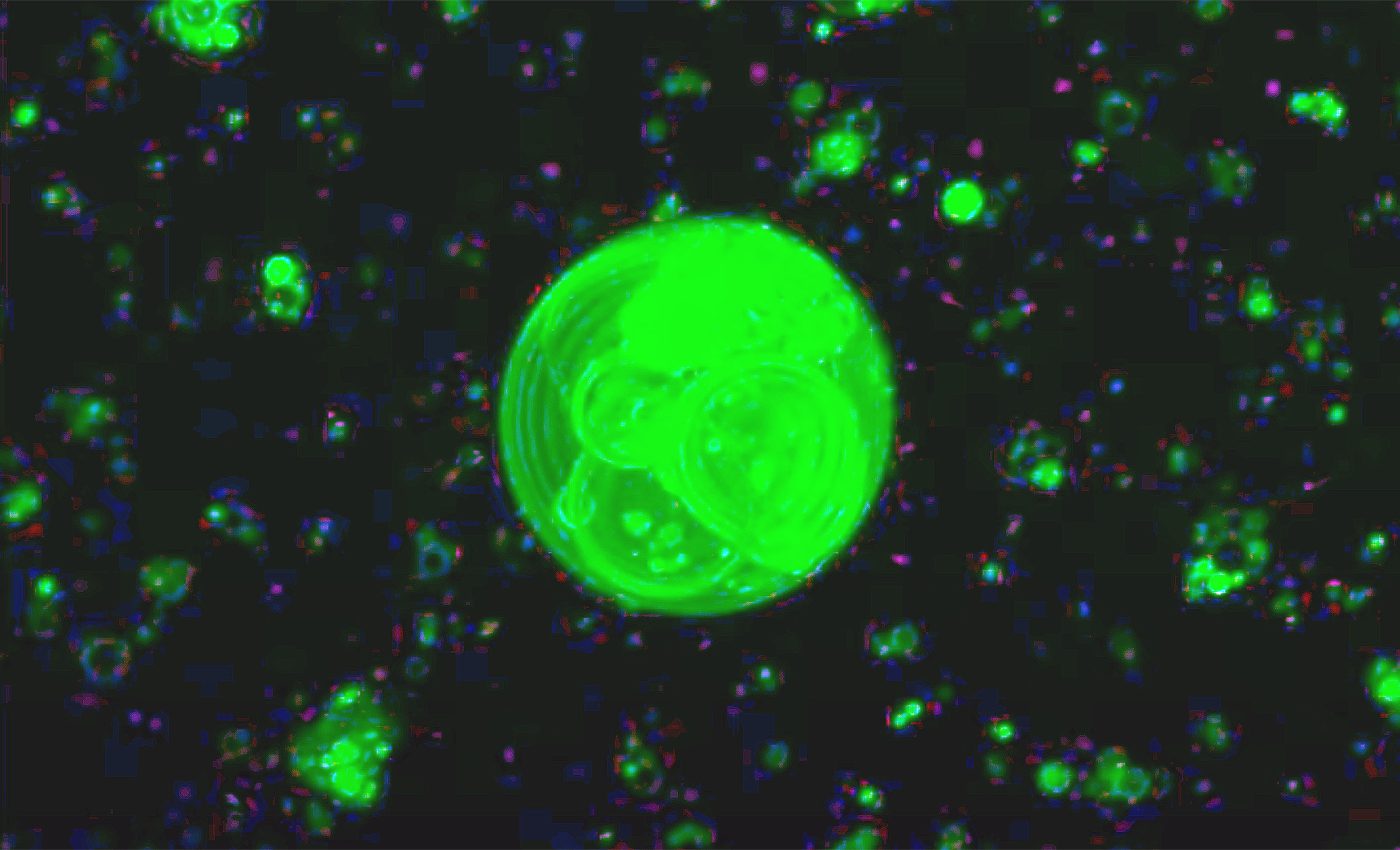
How did the first cells form on Earth? Scientists think they finally figured it out
Life on our planet has been shaped over an immense span of time. About 4 billion years ago, Earth began to show signs of the conditions that allowed the first cells, and eventually living organisms, to take hold and populate the planet.
Many researchers have tried to figure out how early chemical structures came together to create the building blocks of life. Some suggest that tiny, spherical assemblies of fats, known as protocells, got the ball rolling.
These protocells might have sparked a cascade of changes that turned basic building blocks into more complex materials. After countless generations, those materials gave rise to fully functional cells.
Questions remain about how these first protocells picked up the pieces they needed to diversify in such a dramatic way.
Now, Ramanarayanan Krishnamurthy, PhD, professor in the Department of Chemistry at Scripps Research, along with a team of scientists, have uncovered new clues that may finally provide answers to this ancient mystery.
Early Earth chemistry and protocells
Early studies have suggested that fatty acids and other simple molecules existed in the planet’s primeval soup.
Researchers have worked hard to figure out how these molecules might have assembled into containers able to grow and split.
During this recent investigation, teams paid special attention to phosphates. These groups of atoms are vital to many functions in modern cells, but their presence in ancient structures was puzzling.
Scientists reported that phosphorylation, the process of adding phosphate groups, may have occurred at an earlier stage than once believed. That step likely led to more complex double-chained protocells.
“At some point, we all wonder where we came from. We’ve now discovered a plausible way that phosphates could have been incorporated into cell-like structures earlier than previously thought, which lays the building blocks for life,” says Krishnamurthy.
“This finding helps us better understand the chemical environments of early Earth so we can uncover the origins of life and how life can evolve on early Earth.”
First cells shifted to double-chains
Researchers point to phospholipids – molecules with two fatty acid tails – as being crucial in modern cell membranes.
Early protocells probably had only one chain of fatty acids, making them less stable than the membranes of contemporary cells.
The new study posits that a blend of simpler fats and early phospholipids might have provided the shift toward a more robust double-chain structure.
This two-tailed arrangement made those protocells better at handling environmental challenges. Lab experiments used various chemical mixtures, including glycerol and short-chain fatty acids.
In some conditions, the vesicles gained stability, suggesting that an ancient environment could have offered the perfect setting for these changes to take hold.
Why does any of this matter?
Part of the excitement around this work comes from the possibility of creating synthetic cells.
Lab-built cells that behave like living ones could someday allow scientists to design new methods for making important materials or finding sustainable sources of energy.
The researchers examined how temperature, metal ions, and fluctuating pH might have influenced the sturdiness of protocells.
Their observations hint at several routes for protocells to split, fuse, or combine components.
“The vesicles were able to transition from a fatty acid environment to a phospholipid environment during our experiments, suggesting a similar chemical environment could have existed 4 billion years ago,” says first author Sunil Pulletikurti, postdoctoral researcher in Krishnamurthy’s lab.
This fresh perspective adds weight to the notion that evolving cell-like structures might have undergone a stepwise assembly that drew from naturally occurring materials.
From the first cells to complex life
Krishnamurthy’s group joined forces with the lab of soft matter biophysicist Ashok Deniz, PhD, professor in the Department of Integrative Structural and Computational Biology at Scripps Research.
By combining chemical expertise with biophysical approaches, the teams pinpointed conditions where phosphorylated molecules emerged and interacted with fatty acids to form sturdier compartments.
Published in the journal Chem, these findings highlight how subtle environmental shifts could have nudged protocells toward more lifelike behavior.
“It’s exciting to uncover how early chemistries may have transitioned to allow for life on Earth. Our findings also hint at a wealth of intriguing physics that may have played key functional roles along the way to modern cells,” says Deniz.
Each insight gained is a small step toward explaining how simple vesicles might have paved the way for more dynamic elements of biology.
What happens next?
With these observations in hand, the team plans to investigate why some protocells merge while others split or flourish under certain chemical pressures.
Such investigations could clarify how flexibility in membrane structures contributed to swift adaptation in various environments.
Understanding these features may open doors to engineered systems that harness ancient chemical reactions for modern applications.
Though many pieces of the puzzle remain scattered, each study brings us closer to answering profound questions about our beginnings.
Researchers hope that continued collaboration among chemists, biologists, and engineers will pinpoint the mechanisms that gave rise to functional cells.
The full study was published in the journal Chem.
—–
Like what you read? Subscribe to our newsletter for engaging articles, exclusive content, and the latest updates.
Check us out on EarthSnap, a free app brought to you by Eric Ralls and Earth.com.
—–












